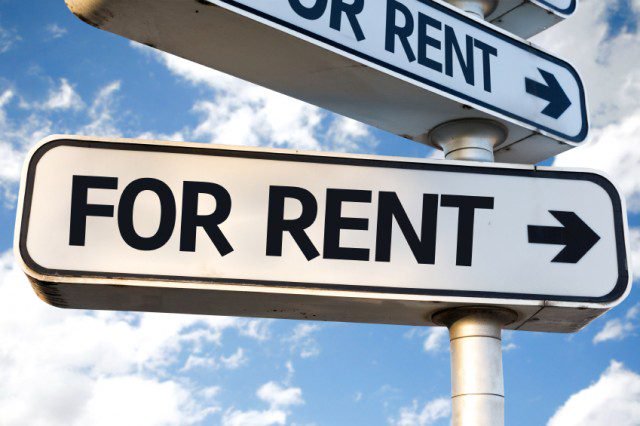It’s a question that will be on every property owner’s, investor’s and buyer’s lips – what will 2017 hold for London’s property market?
Mark Lawrinson, of London estate agent Portico, answers some key questions and reveals his top predictions and potential hotspots in London’s property market for the following 12 months…
2016 recap
We all know that 2016 proved an extremely eventful year. House prices in the capital ballooned to unbelievable levels, the additional 3% Stamp Duty rate for additional homes was introduced, and the Bank of England cut interest rates to just 0.25%, making mortgages the most affordable they’ve been for a long time.
London’s new Mayor, Sadiq Khan, opened the Night Tube on several lines and set out plans for more “genuinely affordable” London homes. But despite his efforts, affordable housing is still a huge problem and concern for the majority of Londoners – and the issue is exacerbated by the fact that property sales volumes in the capital are now at historic lows.
The year culminated with Philip Hammond’s first Autumn Statement, in which he pledged to ban letting agent fees charged to tenants, in an attempt to help generation rent.
Through all of these changes in the property market, the country experienced a number of political shocks. EU referendum worries dominated the summer months, before the shock of the Brexit vote left the UK – and its property market – in a period of uncertainty. The USA’s election of Donald Trump as its president also caused a shockwave this side of the pond.
This year, we will find out how profound the effects of these events on London’s property market will be. Lawrinson shares his forecast:
- Prices will soften or continue to rise slowly
Buyer affordability was stretched to the limits last year. With the current average house price in London at the highest it has ever been – £580,600 – property value growth simply cannot continue at this rate. Sales transactions in the capital have also dropped significantly since the Stamp Duty surcharge came into effect last year – now down by 60% in prime central London.
The combination of Brexit, over-inflated prices and falling sales volumes mean that price growth is expected to slow this year, with values in prime central locations most likely to soften.
And although Brexit will by no means solve generation rent, slower price growth and super low mortgage rates will come as welcome news to those hoping to get onto the property ladder.
- Greatest price growth will be in Zone 3 outwards

What Will 2017 Hold for London’s Property Market?
Though Lawrinson expects prices to soften in prime central London, he still expects certain hotspots to experience growth – though perhaps not at the level seen in recent years.
If you’re seeking an investment in London’s property market, it’s vital that you buy in areas that are undergoing gentrification or infrastructure investment, Lawrinson insists, as these locations will offer healthy yields, making mortgage repayments less of a worry.
Areas in the outer zones are likely to experience the highest price growth of the year. Zone 5’s East Croydon is becoming the capital’s next big property hotspot, he believes, as it’s currently undergoing huge development, offers key train links and the Gatwick Express, and Westfield shopping centre will soon be arriving. Its mix of luxury and affordable living also makes the area great for young professionals.
Crossrail beneficiary Forest Gate is also likely to experience further gentrification when the high-speed rail link arrives this year, which will keep house prices on their upward climb. Leyton is another east London hotspot tipped for price growth – in fact, east London as a whole will be one of the best investment locations generally this year, due to improving transport links and affordable property values (when compared to the rest of the capital).
If you want to invest more centrally, Farringdon is a safe bet, again thanks to key infrastructure changes, such as Crossrail, and the fact that the nearby Silicon Roundabout is becoming a great area to live, work and play.
- Rush in valuations
Back in 2015, then chancellor George Osborne revealed a shock tax change – the tax relief that landlords currently receive on finance costs will be restricted to the basic rate of Income Tax. Basically, the current rules that give most landlords a 40% discount on their finance costs will be cut to 20%. This tax change will be phased in gradually from 6th April this year and will be fully implemented by 2020.
There’s no doubt that this reduction will make things more difficult for landlords. However, all investors must be aware that those who are basic rate taxpayers or those without a mortgage won’t be affected at all. Nevertheless, the change may also push around 22% of landlords into the higher tax bracket.
Secondly, there are steps that landlords can take to try and cut their interest costs – the first being remortgaging. Buy-to-let mortgage interest rates have dropped massively in recent years, so deals currently on the market will likely be substantially better than those arranged a few years ago.
With large house price increases in London, another tip is to get your investment property re-valued. This will make your lender recalculate your loan-to-value ratio (LTV), and a lower LTV means a better interest rate and a larger choice of lenders.
- Will 2017 be a good year to buy?
For many Londoners, owning a home, a larger home or moving into a new area will likely be a key New Year’s resolution.
With sales volumes typically a leading indicator of price growth, there is a chance that values may soften, making 2017 a great year to buy. Having already witnessed an annual drop in house prices in Westminster, Lawrinson believes that bagging a bargain in London’s central market may be possible. However, he does warn that there is no way to be sure that this price correction will ripple out to Greater London.
Most importantly, he warns, it’s crucial that you buy when you’re ready. As nobody can accurately predict the market, it’s extremely difficult to try and time things to a drop in prices. If you’re buying a home, then holding off could be equally as detrimental as it could be positive.
Nonetheless, with money currently as cheap as it can be to borrow, getting on the property ladder or moving up it should be that bit easier.
As London’s property market has proven in the past, it is an extremely resilient region, making property investments as a business or home incredibly safe.
If you’re purchasing a property to invest or buy-to-let, then – so long as you use the advice available to you – you can protect your assets and minimise any risk. Buy in an up-and-coming area experiencing gentrification or infrastructure investment, advises Lawrinson, and you are likely to benefit from a boost in both rental yield and capital growth, even in a weak market.
- When is the right time to sell?
Again, there is no right or wrong answer to this question, explains Lawrinson. If you need to sell to release money or trade up, there are buyers ready and waiting to take advantage of competitive rates and enter the market when the right property comes along. The firm is already starting to see overseas buyers return to London’s property market, keen to benefit from the weaker pound and softening prices in the prime sector.
Selling this year also gives you the advantage of limited competition in a limited marketplace, which could translate into a quick sale at a good price.







